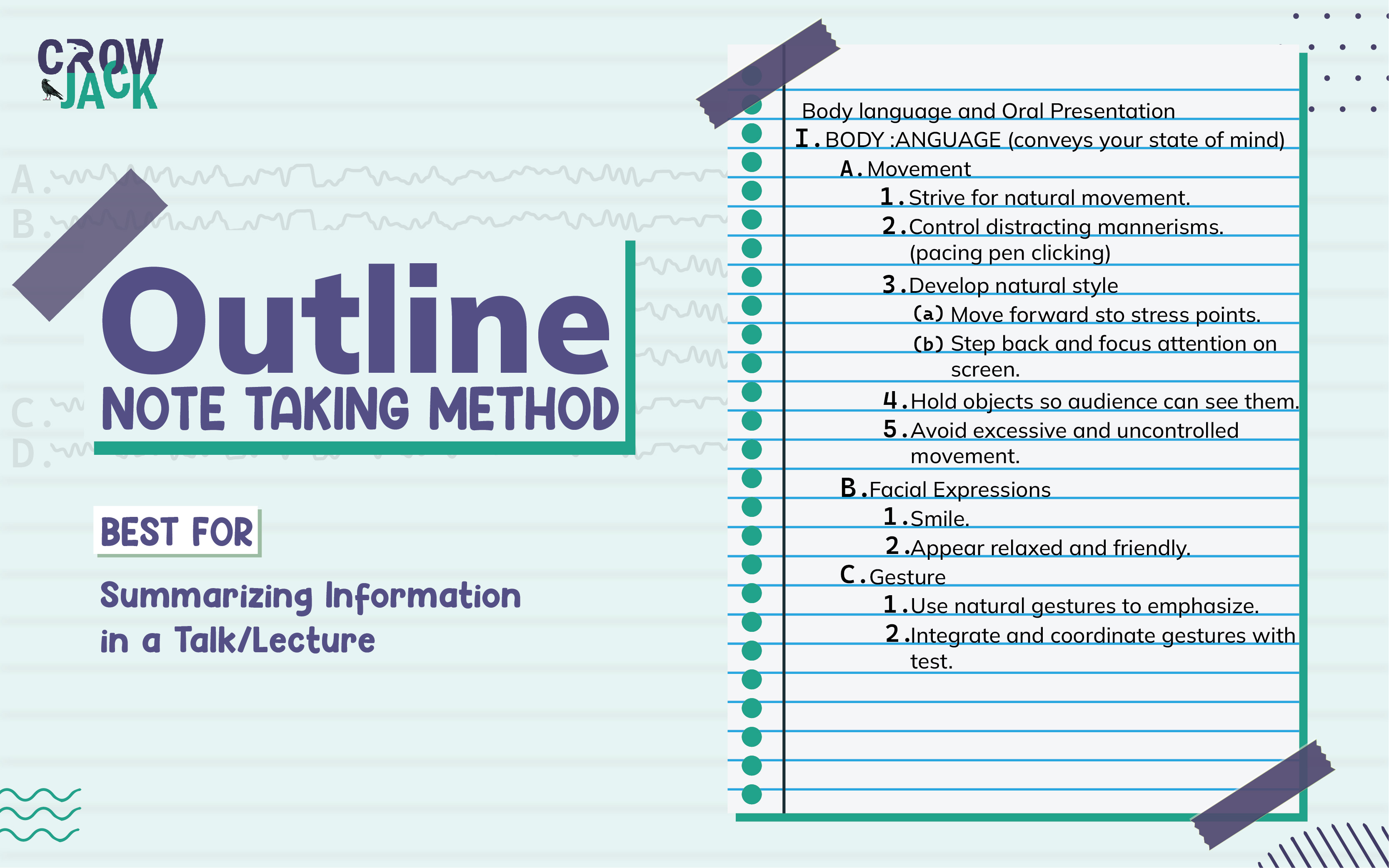Overview of the Outline Method
The Outlining method is a structured approach to organizing information that can be likened to the fable of The Ant and The Grasshopper. Just as the fable contrasts the behaviors of the hardworking ant and the carefree grasshopper, the Outlining method focuses on arranging information hierarchically, creating a solid structure of knowledge.
Table of Contents
In this method, you start with the main idea, akin to the contrasting behaviors of the ant and the grasshopper. From there, you delve into the specific actions, just as the fable details the ant's diligent work in storing food for winter and the grasshopper's disregard for the ant's advice.
Like building an anthill layer by layer, the Outlining method allows each bit of information to have its proper place. As you outline, you construct a structured framework that organizes ideas, supporting details, and subtopics, forming a cohesive and logical structure of knowledge.
By employing the Outlining method, you can effectively capture the core concepts, identify relationships, and establish a hierarchy of information. This method facilitates a deeper understanding of complex topics and enhances the ability to retain and recall information when needed.
Difficulty level: Medium
Process of the Outline Method
1- The outlining method is used to summarize the information after reading a book or attending a lecture. Hence, the first step is to make a list of main topics on the left side leaving enough space for a thorough discussion of subpoints and additional information.
Let's take the same example of “The Inner Planets” within which the main topics are Mercury & Venus as the topic is all around them only. Hence we can mention the topic at the top and later add the main topics Mercury and Venus on the left side.
Mercury (Main topic)
- Subtopic
- Additional Information
Venus (Main topic)
- Subtopic
- Additional Information
2- Once the main topics are defined, you can start adding subtopics under them, and every subtopic can have additional information.
As in our example we have just added the main topics (Mercury and Venus) in the next step we can add subtopics like Distance from the Sun, Temperature of the planet, and Rotation direction.
Mercury (Main topic)
- Distance from Sun (subtopic)
- 47,401 million km (additional Information)
Venus (Main topic)
- Temperature of the planet (subtopic)
- 475-degree Celsius (Additional Information)
3- Once you have expanded your subtopics with additional information, you can add more subtopics and details to refine the ideas.
Pros & Cons of the Outline Method
Pros:
1. Hierarchical Structure: The outline method organizes information in a hierarchical manner, allowing you to categorize and prioritize details effectively.
2. Easy Navigation: The structured format simplifies note review, allowing for easy navigation and finding specific information.
3. Flexibility: The outline method can adapt to various types of content, making it versatile for different contexts.
Cons
1. Limited Visual Representation: The outline format may not lend itself well to visual learners who thrive on diagrams and illustrations.
2. Linear Approach: It may not capture the non-linear connections between ideas as effectively as other methods.
When to use the outlining method for note taking

The outlining method is a valuable tool for organizing and structuring information. It helps you visually represent the main ideas and supporting details of a topic or subject. To make the most of this method, it's important for you to know when and how to use it effectively. This guide will provide you with a clear understanding of when to use the outlining method.
1. Studying Textbooks and Course Materials: When studying from textbooks, course materials, or assigned readings, the outlining method helps you organize and summarize the content. Start by identifying the main chapters or sections and create a hierarchical structure using headings and subheadings. Fill in supporting details, examples, and key terms under each section to enhance your understanding and retention of the material.
2. Researching and Writing Papers or Essays: The outlining method is particularly useful when conducting research and writing papers or essays. Begin by outlining your main argument or thesis statement at the top. Then, break down your main points into subheadings. Under each subheading, include supporting evidence, facts, and examples. This approach ensures a logical flow of ideas and helps you stay focused on your main argument.
3. Planning and Organizing Projects: Whether it's a group project or an individual task, the outlining method can aid in planning and organizing your work. Begin by identifying the main components or milestones of the project and use headings to represent them. Under each heading, list the tasks, resources, and deadlines required to accomplish that component. This approach ensures that you have a clear overview of the project and can effectively manage your time.
4. Preparing Presentations or Speeches: When preparing a presentation or speech, outlining your content will keep you organized and on track. Start by defining the main topics or sections you want to cover. Then, arrange the supporting points, examples, and key details under each section. This method allows you to structure your presentation coherently and helps you remember important points while delivering it.

 Proof Reading
Proof Reading  Copy Writing
Copy Writing  Resume Writing
Resume Writing  Blogs
Blogs Guides
Guides SOP's
SOP's Student Resources
Student Resources Research Topics
Research Topics Login
Login Register
Register